How to Choose the Ideal Rug For Your Room

In today’s blog, we will be delving into the topic of “How to Choose the Ideal Rug For Your Room” Christmas and New Year excitement are right around the corner. So if you’re longing for a new rug or changing your decoration, let’s jump into the blog! 😎
How to Choose the Ideal Rug For Your Room: Design Style
Although you can go eclectic and pull sort of different things together which can be super interesting and create a signature look for yourself, it’s important to know there are also different design styles for rugs So, you’ve got vintage, minimalist, traditional, maximalist, contemporary and many more. Understanding those different styles is going to really impact which rug you are probably going to end up choosing. So, if you are going for a Japandi style in your room, maybe you will need to stay away from very vivid and bright coloured rugs. For this case, you could go for more natural and earthy colours and hues.
If you are going for a modern rug, you might want to go for geometric shaped rugs with bright colours and strong contrast. At the end of the day, we should be mindful of design styles. There’s so much room here to play together with your personality and taste. Also, as I’ve mentioned above, you can mix different styles together, which I personally always find interesting. However, what I advise is, if you are kind of new to styling and interior design world, you might want to stick to a specific or a couple of styles. Because that rug will definitely set the tone for the rest of your room and furniture.

How to Choose the Ideal Rug For Your Room: Material
Alright, let’s talk about material as well. Firstly, you should think about where these rugs are going. For instance, if you are looking for a rug for a high traffic area such as your kids’ room, entryway or living room, etc, I would probably go for something like a polypropylene rug.
These rugs are very durable and washable. You know that these rugs are of course going to get dirty. So you want to be able to wash them regularly and easily and you don’t want to replace those rugs over and over again. In those high-traffic areas, choosing a delicate rug wouldn’t be super useful for you.
Size
No matter what they say but when it comes to rugs, size really matters baby 😎 So, when it comes to picking out the size rug for your space, first of all, get a rug big enough to accommodate all the furniture. However, it should not be so big that’s going to sort of bump into the edges of your wall. You are going want to a little bit of space around the edges of your rug. So that it’s not completely wall-to-wall. But you want to make sure it is able to accommodate all the different furniture pieces. Keep in mind that, if you’re especially living in an apartment flat, you can put the front two legs of your furniture on the then have the back two legs off of it. This half-on half-off solution is really good for sort of smaller spaces.
Bonus: Have fun with the rugs!
Aren’t rugs like an art piece? It’s like another art piece of art that you’re putting on your floor that’s going to help ground your space. Some options to having fun, you can use them as wall décor. I’ve seen that and that can look really cool 😍 Also, you can start layering rugs.
Actually that’s totally up to you and your imagination. Because that place is where you live and create some space for fun and colours. Reflect your personality and don’t be afraid to add some spice from yourself!
Ideal Rug Size for Living Room: Maximising Comfort and Style
Choosing the right rug size for your living room is crucial for creating a balanced and inviting space. The ideal rug should be large enough to anchor your furniture arrangement while leaving some floor visible around the edges. For most living rooms, a rug that allows for all front legs of furniture to rest on it works well. In larger spaces, aim for a rug that accommodates all furniture legs. Remember, a rug that's too small can make the room feel disjointed, while one that's too large may overwhelm the space.

Ideal Rug Size for King Bed: Framing Your Sleep Sanctuary
When selecting a rug for a king-sized bed, opt for dimensions that create a generous border around the bed. An ideal size is typically 9x12 feet or larger, allowing for about 60-90 cm of rug visible on all sides of the bed. This size ensures a luxurious feel underfoot when getting in or out of bed. For a more dramatic look, consider a rug large enough to extend under your bedside tables as well.
Ideal Rug Size: Finding the Perfect Fit for Any Room
The ideal rug size varies depending on the room and its function. Generally, aim for a rug that defines the space without overwhelming it. In living areas, ensure the rug is large enough for key furniture pieces to sit on it. For dining rooms, choose a rug that extends at least 60 cm beyond the table on all sides. In bedrooms, the rug should provide a soft landing around the bed. Remember, the right size rug can tie a room together and create a cohesive look.

Ideal Rug Size for Queen Bed: Balancing Proportion and Comfort
For a queen-sized bed, the ideal rug size should provide ample coverage while maintaining room proportions. A 8x10 feet rug typically works well, allowing for about 45-60 cm of rug visible on each side of the bed. This size ensures a comfortable walking area around the bed and can accommodate bedside tables. For a cosier feel in smaller rooms, a 6x9 feet rug placed at the foot of the bed and extending outwards can also be effective.
Ideal Rug Size Under Queen Bed: Creating a Luxurious Foundation
When placing a rug under a queen bed, aim for a size that extends beyond the bed on all sides. An 8x10 feet rug is often ideal, providing about 60-90 cm of coverage on each side and at the foot of the bed. This arrangement creates a plush border around the bed and helps to anchor the room's focal point. If space allows, consider a larger 9x12 feet rug for an even more luxurious feel.
Ideal Rug Size for Room: Tailoring to Your Space and Style
The ideal rug size for any room depends on its dimensions and furniture layout. As a general rule, leave 30-45 cm of bare floor around the rug's edges. In living rooms, ensure the rug is large enough for all furniture to sit on it partially or fully. For dining areas, choose a rug that extends 60-75 cm beyond the table on all sides. In bedrooms, the rug should provide a soft landing area around the bed. Remember, the right rug size can define spaces and create visual harmony in your room.
Ideal Rug Size for Dining Table: Ensuring Comfort and Functionality
When selecting a rug for your dining area, consider a size that extends at least 60 cm beyond the table edge on all sides. This extra space ensures chairs remain on the rug even when pulled out. For a standard 6-seater rectangular table, an 8x10 feet rug often works well. For round tables, measure the diameter and add 120-150 cm to determine the ideal rug size. Remember, a properly sized dining room rug defines the eating area and protects your floor from chair movement.

Ideal Rug Pad Thickness: Balancing Protection and Practicality
The ideal rug pad thickness depends on your specific needs and the type of rug. For most applications, a pad between 1/4 inch to 3/8 inch thick provides adequate cushioning and protection. Thicker pads, up to 1/2 inch, offer more comfort and insulation, ideal for high-traffic areas or over hard surfaces. However, ensure the combined thickness of the rug and pad doesn't interfere with door clearance or create tripping hazards. Remember, a quality rug pad extends the life of your rug and enhances underfoot comfort.
Ideal Rug Size Under King Bed: Maximising Luxury and Comfort
For a king-sized bed, the ideal rug size should provide generous coverage on all sides. A 9x12 feet rug is often perfect, allowing for 60-90 cm of rug visible around the bed's perimeter. This size ensures a luxurious feel underfoot and can accommodate bedside tables. For an even more opulent look, consider a 10x14 feet rug if your room size permits. Remember, a properly sized rug under a king bed creates a defined sleep area and adds a touch of elegance to your bedroom.
Ideal Rug Size for Bedroom: Creating a Cosy and Stylish Retreat
The ideal rug size for a bedroom depends on the bed size and room dimensions. For queen beds, an 8x10 feet rug usually works well, while king beds may require a 9x12 feet rug or larger. Aim to have the rug extend 45-60 cm on each side of the bed for a balanced look. In smaller bedrooms, consider placing runners on either side of the bed or a smaller rug at the foot. Remember, the right bedroom rug size can frame your bed beautifully, add warmth to the space, and provide a soft surface for your feet in the morning.
People Also Asked
What to consider when choosing a rug?
When selecting a rug, consider the room's size, function, and existing decor. Factor in the rug's material, durability, and maintenance requirements to ensure it fits your lifestyle.
Should a rug be darker or lighter than the floor?
Generally, choose a rug that contrasts with your floor for visual interest. Lighter rugs on dark floors create an airy feel, while darker rugs on light floors add warmth and coziness.
How can you tell a good rug?
Look for quality materials, tight weaves, and even patterns. A good rug should feel dense and sturdy. Check the back of the rug for knot density in hand-knotted rugs.
How to match a rug to a room?
Consider the room's color scheme, furniture, and overall style. Choose a rug that complements existing elements while adding texture and visual interest to the space.
Which type of rug is best?
The best rug type depends on your needs. Wool rugs are durable and luxurious, while synthetic rugs are often more affordable and easy to clean. Consider factors like foot traffic and maintenance when choosing.
What shape rug is best?
The best rug shape depends on your room layout and furniture arrangement. Rectangular rugs are versatile, while round rugs can soften angular spaces. Match the rug shape to your room's proportions and furniture placement.
What makes an area rug high quality?
High-quality area rugs feature superior materials, expert craftsmanship, and durability. Look for tight weaves, even patterns, and rich, fade-resistant colors. Hand-knotted rugs often represent the highest quality.
How to find a rug you like?
Explore various styles, colors, and patterns. Browse online retailers, visit local stores, and consider custom options. Take your time to find a rug that resonates with your personal style and complements your space.
How to tell if a rug is expensive?
Expensive rugs often feature high-quality materials, intricate designs, and expert craftsmanship. Look for hand-knotted construction, natural fibers like silk or wool, and complex, detailed patterns.
Why are Turkish rugs so expensive?
Turkish rugs are prized for their traditional craftsmanship, high-quality materials, and cultural significance. The intricate designs, hand-knotting techniques, and use of natural dyes contribute to their high value.
What is the difference between Turkish and Persian rugs?
While both are renowned for quality, Turkish and Persian rugs differ in design motifs, knot types, and cultural influences. Persian rugs often feature more curvilinear designs, while Turkish rugs tend to have more geometric patterns.
What color rug makes a room look bigger?
Light-colored rugs, such as beige, cream, or pale gray, can make a room appear larger and more open. These colors reflect light and create an illusion of space.
What is the best color for a rug?
The best color depends on your room's decor and personal preference. Neutral colors offer versatility, while bold colors can serve as a focal point. Consider your existing color scheme and the mood you want to create.
What color rug doesn't show dirt?
Multi-colored rugs with intricate patterns are best at hiding dirt and stains. Medium-toned colors like beige, gray, or taupe can also help conceal everyday dirt.
Should your rug match your wall color?
Your rug doesn't need to match your wall color exactly. Instead, aim for complementary or coordinating colors that create a cohesive look while adding visual interest to the room.
Should your rug match your floor?
Rather than matching exactly, your rug should complement your floor. Aim for a contrast in color or texture to define the space and add depth to the room's design.
Do dark rugs make a room look small?
Dark rugs can make a room feel cozier and more intimate, which may make it appear smaller. However, when used strategically, dark rugs can add depth and create a sense of grounding in larger spaces.
How can you tell if a rug is good quality?
Look for tight, even weaves, rich colors, and sturdy construction. Quality rugs should lie flat, have consistent patterns, and feel dense underfoot. Check the back of hand-knotted rugs for knot density.
How do you match a rug to a room?
Consider the room's existing color scheme, furniture style, and overall ambiance. Choose a rug that complements these elements while adding texture and visual interest. Use the rug to tie different design elements together.
Should I get light or dark area rug?
The choice between light and dark depends on your room's lighting, existing decor, and personal preference. Light rugs can make a space feel larger and brighter, while dark rugs add warmth and coziness.
How do I know what size rug is best?
Measure your room and consider furniture placement. In living rooms, aim for a rug large enough to fit under the front legs of all seating. In bedrooms, the rug should extend beyond the sides of the bed. Always leave a border of floor visible around the rug's edges.
What rugs do designers use?
Designers often choose high-quality, natural fiber rugs like wool or silk. They may opt for vintage or antique rugs for character, or custom-designed rugs to perfectly fit a space. Neutral, textured rugs are also popular for their versatility.
What are the two most important factors when purchasing an area rug?
The two most crucial factors are size and quality. The right size ensures the rug properly defines the space, while quality determines the rug's durability, appearance, and long-term value.
What makes a fine high quality rug?
High-quality rugs feature superior materials, expert craftsmanship, and durability. Look for natural fibers, tight weaves, even patterns, and rich, fade-resistant colors. Hand-knotted rugs often represent the highest quality.
What kind of rug is popular?
Currently, popular rug styles include vintage-inspired designs, minimalist patterns, and textured neutral rugs. Sustainable and eco-friendly rugs are also gaining popularity among environmentally conscious consumers.
Should a rug be the same color as the couch?
It's not necessary for the rug to match the couch exactly. Instead, aim for complementary colors or patterns that create a cohesive look. The rug can pick up accent colors from your couch or other room elements.
How should a rug look in the living room?
In the living room, a rug should define the seating area and tie the space together. It should be large enough to accommodate at least the front legs of all furniture pieces. The rug's style and color should complement the room's overall design theme.
Should rug be wider than bed?
Yes, ideally, the rug should extend 18-24 inches beyond each side of the bed. This ensures you step onto the rug when getting out of bed and creates a balanced, proportional look in the bedroom.
Should you buy a rug first or last?
It's often easier to choose a rug last, after selecting major furniture pieces and wall colors. However, if you find a rug you love, it can serve as inspiration for the room's entire color scheme and design direction.
How do you know if a rug is quality?
Quality rugs have tight, even weaves, rich colors, and sturdy construction. They should lie flat, have consistent patterns, and feel dense underfoot. For hand-knotted rugs, check the back for knot density.
How do I choose a rug that goes together?
To create a cohesive look, choose rugs with complementary colors, similar styles, or coordinating patterns. Consider the function and mood of each room when selecting rugs that work together throughout your home.
How do I choose a sustainable rug?
Look for rugs made from natural, renewable materials like wool, jute, or organic cotton. Check for certifications like GoodWeave or GOTS. Consider rugs made from recycled materials or those produced using eco-friendly manufacturing processes.
Should a rug be darker or lighter?
The choice between darker or lighter rugs depends on your room's lighting, existing decor, and personal preference. Lighter rugs can make a space feel larger and brighter, while darker rugs add warmth and coziness.
Which type of rug is best?
The best rug type depends on your specific needs. Wool rugs are durable and luxurious, synthetic rugs are often more affordable and easy to clean, while natural fiber rugs like jute or sisal offer a casual, eco-friendly option.
What shape rug is best?
The best rug shape depends on your room layout and furniture arrangement. Rectangular rugs are versatile and work well in most spaces, round rugs can soften angular rooms, and runner rugs are perfect for hallways or alongside beds.
What makes an area rug high quality?
High-quality area rugs feature superior materials, expert craftsmanship, and durability. Look for tight weaves, even patterns, rich colors, and sturdy construction. Natural fibers and hand-knotted techniques often indicate higher quality.
How do I choose a room rug?
Consider the room's size, function, and existing decor. Choose a rug that complements your furniture and color scheme while being appropriate for the room's use. Factor in durability for high-traffic areas and comfort for spaces like bedrooms.
How to pick a rug pattern?
Choose a pattern that complements your room's style and existing decor. Bold patterns can serve as a focal point, while subtle patterns add texture without overwhelming the space. Consider the room's size – larger patterns work well in spacious rooms, while smaller patterns suit cozier spaces.
What makes a rug luxurious?
Luxurious rugs often feature high-quality natural materials like silk or fine wool, intricate designs, and expert craftsmanship. Hand-knotted rugs, antique or vintage pieces, and rugs with high knot counts are typically considered more luxurious.
Does a rug make a room look bigger or smaller?
The effect of a rug on room size perception depends on its color, pattern, and placement. Light-colored, large rugs that extend close to the walls can make a room appear bigger. Dark or small rugs might make a space feel cozier but potentially smaller.
How can you tell a good rug?
Look for quality materials, tight weaves, and even patterns. A good rug should feel dense and sturdy underfoot. Check the back of hand-knotted rugs for knot density. Colors should be rich and consistent throughout the rug.
What determines the quality of a rug?
Rug quality is determined by materials used, construction method, knot density (for hand-knotted rugs), color fastness, and overall durability. Higher quality rugs often use natural fibers, feature intricate designs, and are made using traditional techniques.
How to find a rug you like?
Explore various styles, colors, and patterns. Browse online retailers, visit local stores, and consider custom options. Take your time to find a rug that resonates with your personal style and complements your space. Consider ordering samples to see how colors and textures look in your room.
How do you match a room to a rug?
Consider the room's existing color scheme, furniture style, and overall ambiance. Choose a rug that complements these elements while adding texture and visual interest. Use the rug to tie different design elements together or as a starting point for the room's color palette.
Should rug be darker than carpet?
Generally, it's best to choose a rug that contrasts with your carpet for visual interest. A darker rug on lighter carpet can help define a specific area within the room, while a lighter rug on dark carpet can create a focal point.
How do I choose a rug size?
Measure your room and consider furniture placement. In living rooms, the rug should be large enough to fit under the front legs of all seating. In dining rooms, ensure the rug extends at least 24 inches beyond the table on all sides. Always leave a border of floor visible around the rug's edges.
What shape should my rug be?
The rug shape should complement your room's layout and furniture arrangement. Rectangular rugs are versatile and suit most rooms. Round rugs work well in square rooms or under round tables. Runner rugs are perfect for hallways or alongside beds.
How to choose a rug to unify your space?
Select a rug that incorporates colors from various elements in your room, such as curtains, throw pillows, or artwork. Choose a size that allows for consistent placement of furniture legs either on or off the rug. Consider the rug's texture and how it complements other textiles in the space.
Should a rug be smaller than the couch?
No, ideally, the rug should be larger than the couch. In a living room, the rug should extend beyond the seating area, with at least the front legs of all furniture pieces on the rug. This helps to define the space and create a cohesive look.
What rug should I get for bedroom?
For a bedroom, choose a rug that offers comfort underfoot and complements your decor. Consider a plush, high-pile rug for added luxury, especially around the bed. Opt for neutral tones to create a calming atmosphere, or select a patterned rug to add visual interest. Ensure the rug is large enough to extend beyond the bed, providing a soft landing when you step out in the morning.
What is the rule of thumb for area rugs?
The rule of thumb for area rugs is to choose a size that accommodates your furniture arrangement. In living rooms, aim for all furniture legs to be on the rug, or at least the front legs. For dining rooms, ensure the rug extends at least 24 inches beyond the table's edge. In bedrooms, the rug should extend 18-24 inches around the bed. Always leave some floor visible around the rug's edges for a balanced look.
What colour rug makes a room look bigger?
Light-colored rugs generally make a room appear larger. Cream, beige, or light gray rugs can create an illusion of more space by reflecting light. Cool tones like pale blue or soft green can also enhance the sense of openness. For a bolder approach, consider a large-scale pattern in light colors, which can create depth and make the room feel more expansive.
Is it better to have a rug too big or too small?
It's generally better to have a rug that's slightly too big rather than too small. A rug that's too small can make a room feel disjointed and cramped. An oversized rug, while not ideal, can still anchor the space effectively. However, the best approach is to measure your room and furniture carefully to select a rug that fits properly, following the standard sizing guidelines for each room type.
What is the right size rug for my room?
The right size rug depends on your room's dimensions and furniture layout. For living rooms, aim for a rug large enough to fit all furniture legs or at least the front legs. In dining rooms, the rug should extend 24-30 inches beyond the table edge. Bedroom rugs should be large enough to extend 18-24 inches around the bed. Always leave some visible floor space around the rug's edges for a balanced look.
Can a rug touch walls?
While a rug can touch walls, it's generally not recommended. Ideally, leave a few inches of floor space visible between the rug and the walls. This creates a more polished look and prevents the rug from appearing like wall-to-wall carpeting. In smaller rooms, you might need to allow the rug to touch walls on one or two sides, but try to maintain some visible floor space where possible.
Should a rug go under a sofa?
Yes, a rug should typically go under a sofa for a cohesive look. The front legs of the sofa should be on the rug at minimum. For a more luxurious feel, place all legs of the sofa on the rug. This approach helps to anchor the furniture and define the seating area. In larger rooms, ensure the rug extends beyond the sofa to unify the entire seating arrangement.
What type of rug is most comfortable?
The most comfortable rugs typically have a plush, high pile. Wool rugs offer natural softness and insulation. Shag rugs provide a luxurious feel underfoot. For a balance of comfort and practicality, consider medium-pile rugs in materials like cotton or synthetic blends. Memory foam-backed rugs can add extra cushioning. The comfort level also depends on personal preference, so feel samples in person when possible.
How to choose the style of rug?
Choosing a rug style involves considering your existing decor, personal taste, and room function. For traditional spaces, consider Oriental or Persian-style rugs. Modern interiors benefit from geometric patterns or solid colors. Textured rugs add depth to minimalist rooms. Consider the room's color scheme and choose a rug that complements or contrasts effectively. Don't forget to factor in practicality – high-traffic areas may require more durable, easy-to-clean styles.
Should a rug cover the entire floor?
A rug doesn't need to cover the entire floor. In fact, leaving some visible floor space around the edges of the rug is generally more aesthetically pleasing. Aim to leave about 12-18 inches of bare floor around the rug's perimeter. This creates a framed effect and prevents the room from feeling overcrowded. However, in very large rooms or open-plan spaces, using multiple rugs to define different areas can be more effective than one oversized rug.
How do you calculate a rug?
To calculate the right rug size, start by measuring your room and furniture. For living rooms, measure the seating area and add 24-30 inches on all sides. In dining rooms, measure the table and add 24-36 inches to each side. For bedrooms, measure the bed and add 18-24 inches around it. Always consider the room's shape and furniture layout. Use painter's tape on the floor to visualize the rug size before purchasing.
Should a rug match the sofa or walls?
A rug doesn't need to exactly match your sofa or walls, but it should complement them. Consider choosing a rug that incorporates colors from both your sofa and walls to tie the room together. If your sofa and walls are neutral, a rug can be an excellent opportunity to introduce color or pattern. For a more cohesive look, select a rug that's in the same color family as your sofa or walls, but in a different shade or tone.
How to pick rugs for open concept?
In open concept spaces, use rugs to define separate areas while maintaining a cohesive look. Choose rugs with complementary colors or patterns to create visual flow. Ensure rug sizes are proportional to each defined area. Use similar materials or textures across different rugs for unity. Consider the overall color scheme of the space and how each rug contributes to it. Remember to leave some bare floor between rugs to prevent a cluttered appearance.
Should a rug be lighter or darker than a couch?
The choice between a lighter or darker rug depends on your design goals. A rug lighter than the couch can brighten the space and make the room feel more open. A darker rug can ground the space and create a cozy atmosphere. For a balanced look, choose a rug that's a few shades lighter or darker than your couch. Consider the room's overall color scheme and lighting when making your decision.
What color rug goes with everything?
Neutral-colored rugs are the most versatile and go with virtually any decor. Beige, gray, and taupe are classic choices that complement most color schemes. For a bit more character, consider navy blue or sage green, which act as neutrals while adding subtle color. A multicolored rug with muted tones can also work with various decor styles and color palettes. Remember, the key is to choose a rug that harmonizes with your existing furnishings and wall colors.
Is a dark or light rug better for a small room?
Generally, a light-colored rug is better for a small room as it can make the space appear larger and more open. Light colors reflect more light, creating an airy feel. However, if your goal is to create a cozy, intimate atmosphere, a darker rug can work well. If opting for a dark rug in a small space, balance it with lighter walls and furniture to prevent the room from feeling cramped.
What is the rule for rug size?
The general rule for rug size is to choose a rug that fits your furniture arrangement. In living rooms, all furniture legs should be on the rug, or at least the front legs. For dining rooms, the rug should extend at least 24 inches beyond the table edge. In bedrooms, the rug should extend 18-24 inches around the bed. Always leave some visible floor around the rug's edges, typically 12-18 inches, for a balanced look.
Should a sofa sit on a rug?
Yes, a sofa should typically sit on a rug to create a cohesive and well-defined seating area. At minimum, the front legs of the sofa should be on the rug. For a more luxurious look, place all legs of the sofa on the rug. This approach helps to anchor the furniture and visually tie the seating arrangement together. In larger rooms, ensure the rug extends beyond the sofa to unify the entire seating area.
How far should a rug go under the sofa?
Ideally, a rug should extend at least 6-8 inches beyond each side of the sofa. This ensures a balanced look and prevents the rug from appearing too small for the furniture. In larger rooms, aim for 12-18 inches of rug showing on all sides of the sofa. If space allows, having all sofa legs on the rug creates the most cohesive appearance. For smaller rooms or budget constraints, ensuring at least the front legs are on the rug is acceptable.
Related Blog Posts
How to Choose the Best Area Rug
Easiest Rug Ideas For Your Home
Related Rug Collections
Area Rugs



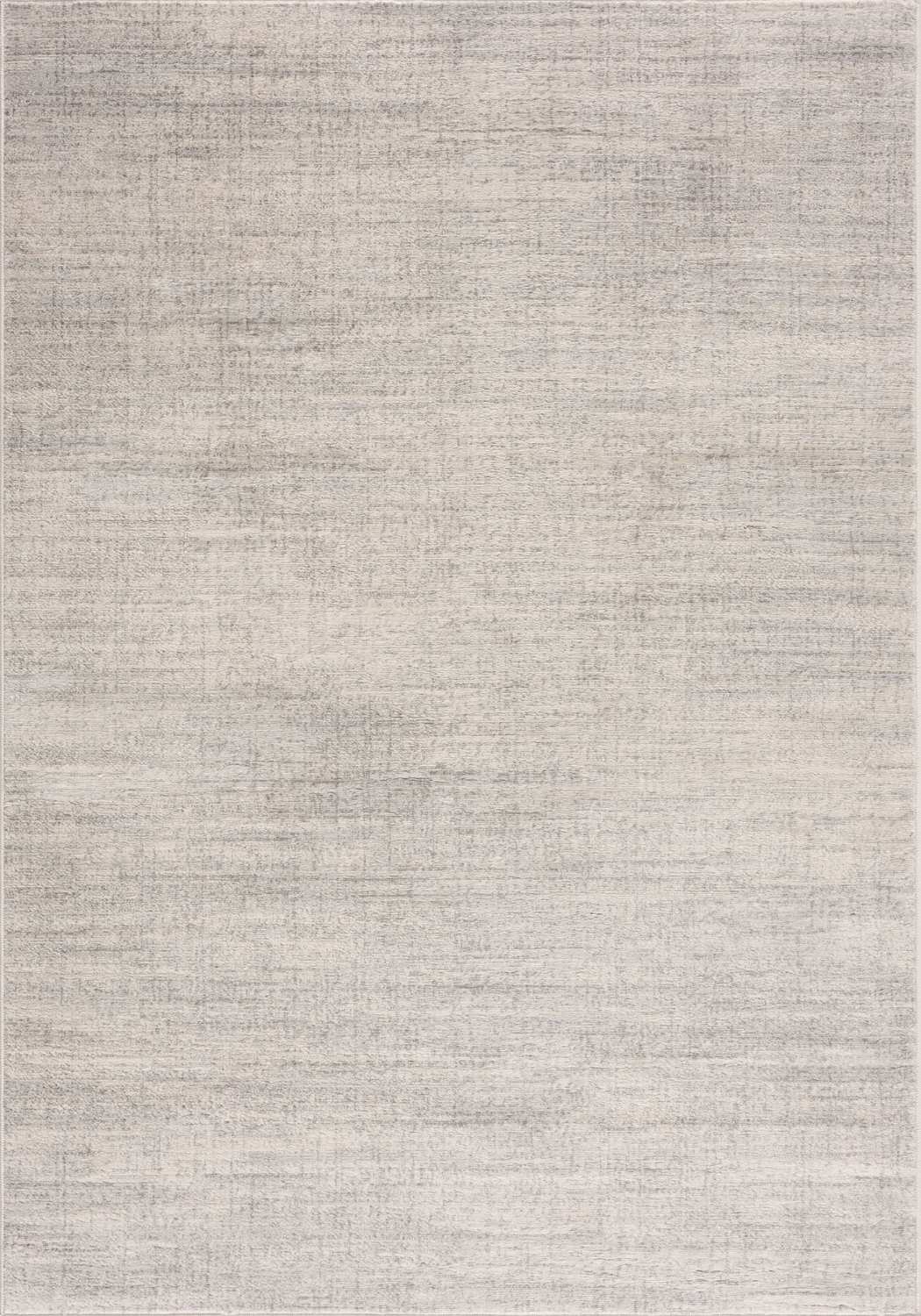
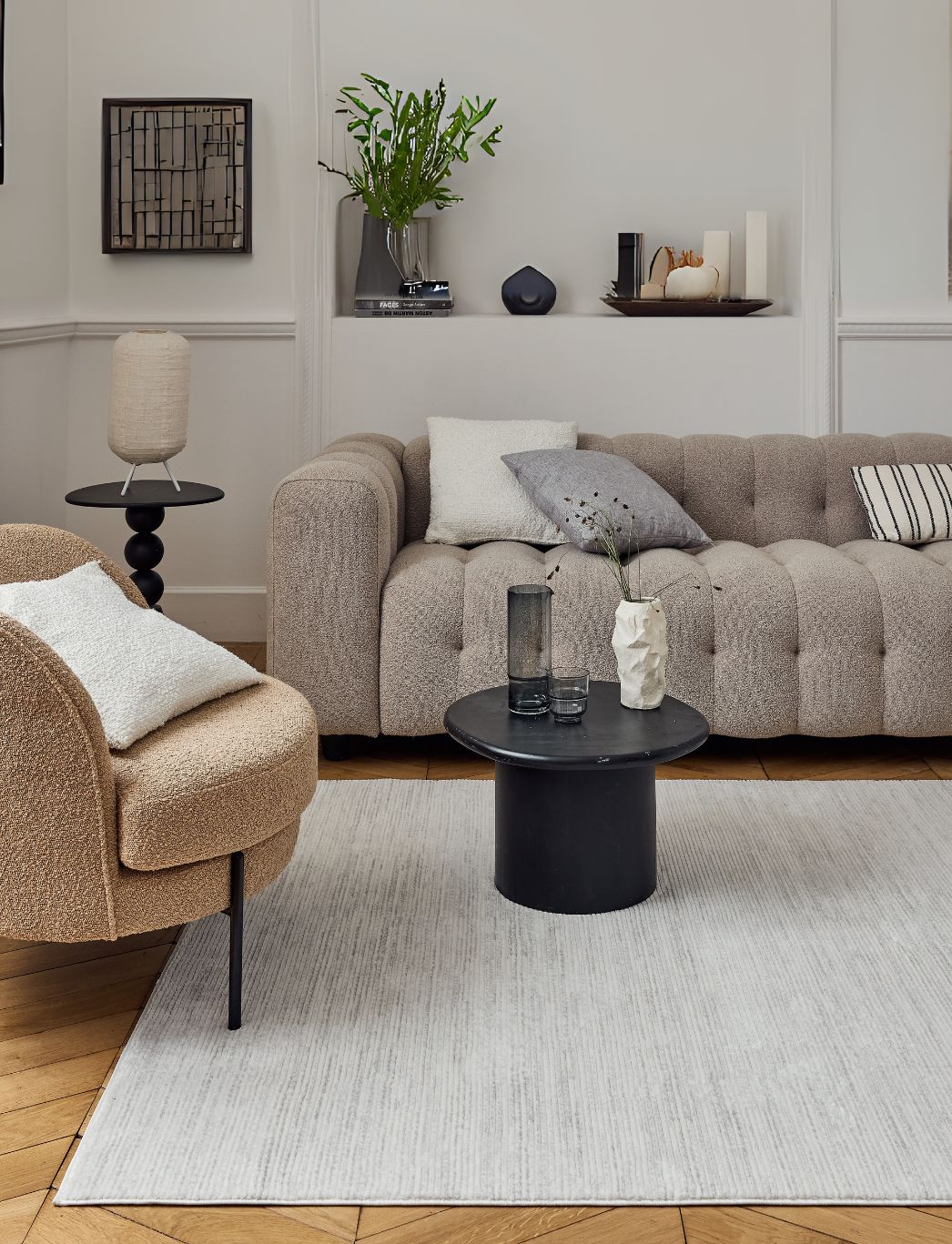
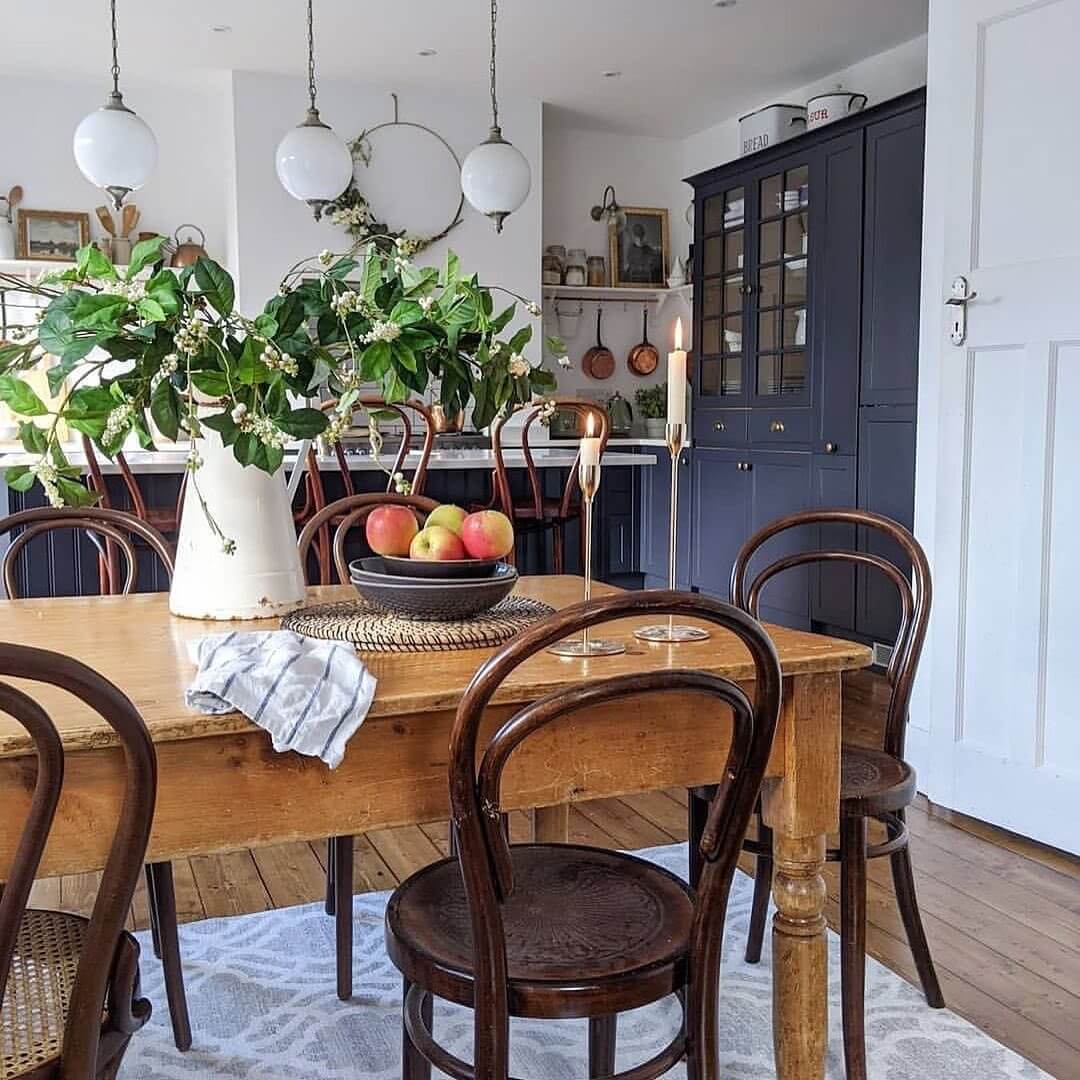
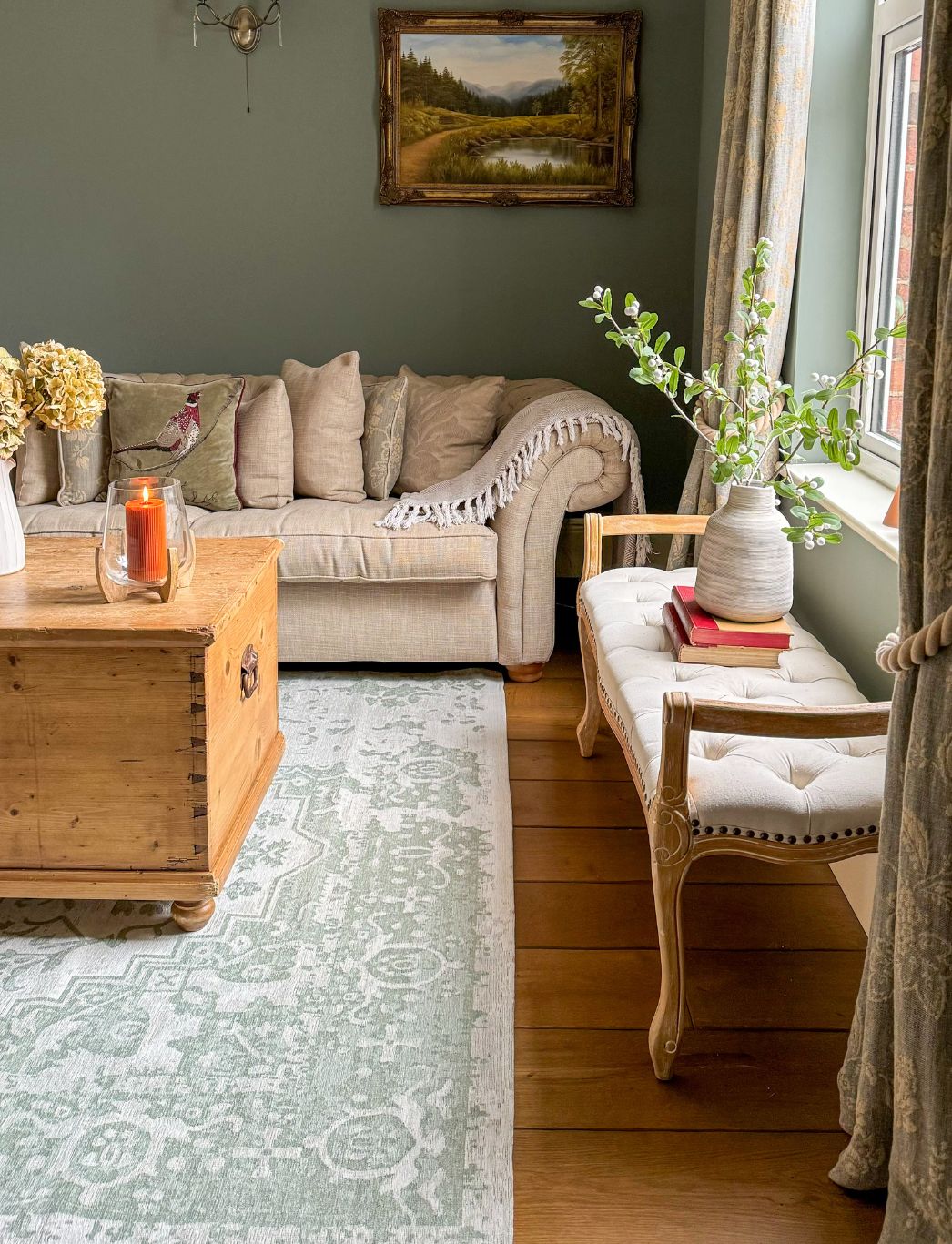


Leave a comment